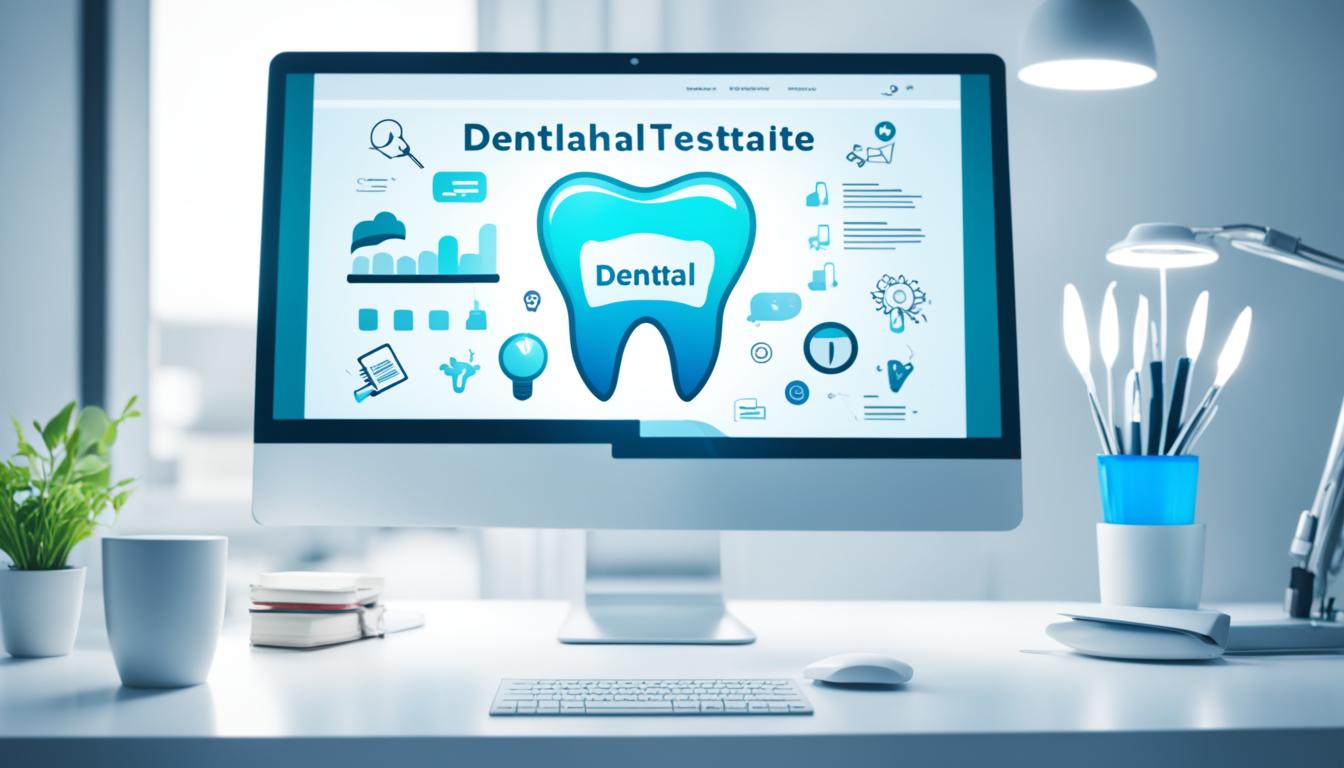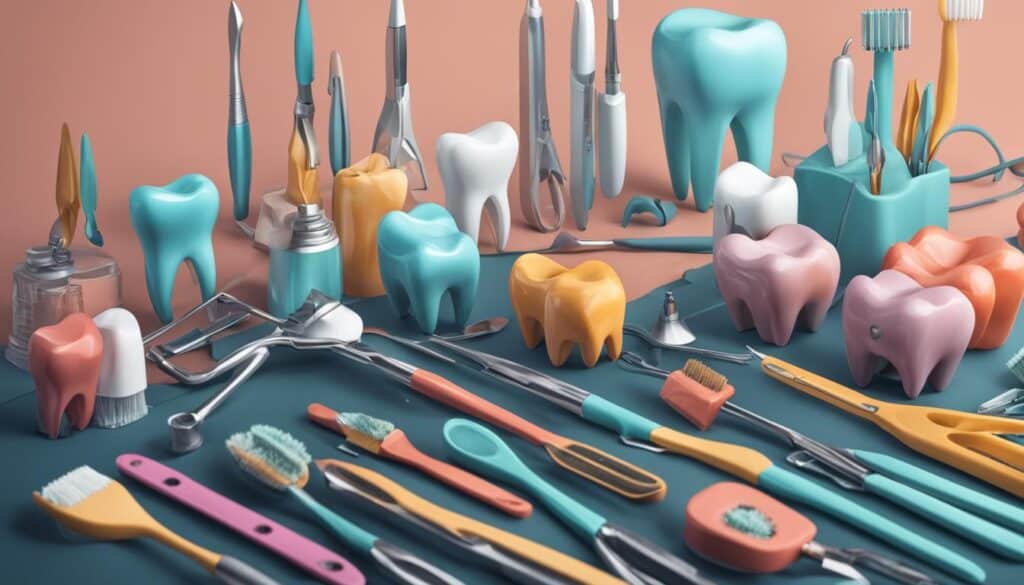
Welcome to my comprehensive guide on dental practice SEO. In this article, I will explain the core components of dental SEO and how you can optimize your website to attract more patients online. By implementing effective SEO strategies, you can increase your visibility on search engine results pages and ultimately grow your dental practice.
When it comes to dental practice SEO, there are several key elements to consider. These include content creation, keyword research, link building, local SEO, and user experience. By understanding and implementing these components, you can position your website to rank higher and attract potential patients.
To start, keyword research plays a vital role in your SEO strategy. By using tools like SEMrush, Ahrefs, and Moz, you can identify the keywords that potential patients are searching for in your area. This allows you to create relevant and engaging content that targets those specific keywords, increasing your chances of appearing in search results.
On-page optimization is another important aspect of dental SEO. This involves optimizing meta tags, title tags, and headers on your website to improve its visibility on search engines. By providing accurate and concise information about your dental practice and services, you can attract the right audience and encourage them to click through to your website.
In addition to on-page optimization, off-page strategies can also enhance your online presence. This includes leveraging social media platforms, online directories, guest blogging, and online reviews to increase your website's authority and credibility. By building reputable backlinks and engaging with your target audience, you can boost your visibility and attract more patients online.
Measuring the success of your SEO efforts is vital. By using analytics and tracking tools, such as Google Analytics and Google Search Console, you can gain insights into your website's performance, user behavior, and the effectiveness of your SEO strategies. This data allows you to make informed decisions and continuously improve your SEO efforts.
Lastly, choosing the right website technology can greatly aid in building an SEO-optimized dental practice website. Platforms like WordPress and Divi offer customizable templates and plugins that are designed to improve your website's SEO performance and user experience.
Key Takeaways:
- Dental SEO involves optimizing your website to rank higher on search engine results pages and attract more patients online.
- Core components of dental SEO include content creation, keyword research, link building, local SEO, and user experience.
- Keyword research tools like SEMrush, Ahrefs, and Moz can assist in finding the right keywords to target for your dental practice.
- On-page optimization involves optimizing meta tags, title tags, and headers to improve your website's visibility.
- Off-page strategies like social media, online directories, guest blogging, and online reviews can enhance your dental practice's online presence.
Understanding Dental SEO
Dental SEO is an essential component of digital marketing for dental practices. It involves various strategies aimed at optimizing your website to rank higher on search engine results pages (SERPs) and attract more patients. By understanding the key components of dental SEO, you can effectively optimize your online presence and drive traffic to your practice.
Content Creation and Keyword Research
One of the fundamental aspects of dental SEO is creating engaging and informative content that resonates with your target audience. By crafting blogs on topics such as oral hygiene, dental procedures, and community overviews, you can establish yourself as a trusted source of valuable information in the dental industry. To maximize the impact of your content, it's crucial to conduct comprehensive keyword research.
Keyword research involves identifying relevant search terms that potential patients use when looking for dental services. By selecting the right keywords and incorporating them naturally into your content, you can improve your website's visibility on SERPs and drive qualified traffic to your site.
Link Building and Local SEO
Another vital component of dental SEO is link building. Building reputable backlinks from authoritative websites not only improves your website's visibility but also establishes trust and credibility with search engines and potential patients. It's important to focus on acquiring high-quality backlinks from relevant dental industry websites and local directories.
Additionally, optimizing your website for local SEO is crucial for attracting patients in your area. This involves including location-specific keywords, optimizing Google My Business listing, and ensuring consistent NAP (Name, Address, Phone number) information across various online platforms.
User Experience Optimization
Providing a positive user experience is essential for both search engines and potential patients. Ensure your website is mobile-friendly, as an increasing number of people use mobile devices to search for dental services. Optimize your website's loading speed to provide a seamless browsing experience. A well-structured website with easy navigation enhances user satisfaction and increases the likelihood of converting visitors into actual patients.

As you can see, understanding dental SEO and its various components is crucial for optimizing your practice's online presence. By creating valuable content, conducting effective keyword research, building reputable backlinks, optimizing for local SEO, and providing a positive user experience, you can attract more patients and grow your dental practice.
Keyword Research for Dentists
Keyword research is a crucial step in optimizing your website for dental SEO. By understanding the keywords that potential patients are using to search for dental services, you can effectively target your content and attract the right kind of traffic. Here, we will explore the process of keyword research for dentists.
To begin your keyword research, start with general terms like "dentist" and "dental care". These broad keywords will give you an idea of the overall search volume and competition. However, to narrow down your focus and attract more targeted traffic, it's important to refine these keywords into more specific, location-specific queries.
One powerful strategy is to use long-tail keywords. These are longer and more specific keyword phrases that have lower search volumes. While they may not generate a high volume of traffic, they can attract highly qualified leads who are specifically looking for the dental services you offer. For example, instead of targeting "dentist Miami," you could use "family dentist in Miami offering cosmetic dentistry."
| Keyword | Search Volume | Competition |
|---|---|---|
| Finding a dentist | 1,000 | High |
| Best dentist in Miami | 500 | Medium |
| Cosmetic dentist Miami | 100 | Low |
Using keyword research tools like SEMrush, Ahrefs, and Moz can provide valuable insights and help you find the best keywords to target for your dental practice. These tools can provide information about search volume, competition, and related keywords, allowing you to make data-driven decisions.
By conducting thorough keyword research, you can optimize your website's content, meta tags, and headings to align with the keywords that potential patients are using. This will improve your website's visibility in search engine results and attract more qualified leads to your dental practice.

Stay tuned for the next section, where we will explore on-page optimization techniques for dental SEO.
On-Page Optimization for Dental SEO
On-page optimization is a crucial aspect of dental website optimization. It involves optimizing key elements on your website, such as meta tags, title tags, and headers, to improve your search engine visibility and attract more potential patients.
Meta tags provide information about your webpage to search engines and should accurately describe your dental services and location. Crafting compelling and concise meta descriptions can encourage users to click on your website when it appears in search results.
Title tags are the clickable headlines that appear on search engine results pages. They should include your dental practice's name, location, and primary service to attract the right audience. By optimizing your title tags with relevant keywords, you can improve your website's visibility and rank higher in search results.
Headers, such as H1, H2, and H3 tags, help structure your webpage's content and make it more user-friendly and accessible. Incorporating keywords in your headers can signal the importance of the content to search engines and improve your on-page optimization.
In addition to optimizing these elements, it is crucial to create keyword-rich content that aligns with your keyword strategy and engages users. By producing valuable and relevant content that answers patients' questions and addresses their concerns, you can not only improve your on-page optimization but also establish your dental practice as a trusted source of information.
FAQ
What is dental practice SEO?
Dental practice SEO is the process of optimizing your website to rank higher on search engine results pages and attract more patients online.
What are the core components of dental SEO?
The core components of dental SEO include content creation, keyword research, link building, local SEO, and user experience optimization.
How can keyword research help in dental SEO?
Keyword research plays a vital role in finding the right keywords to target and attract the right kind of traffic to your dental practice website.
How can on-page optimization improve dental SEO?
On-page optimization involves optimizing meta tags, title tags, and headers to increase visibility and improve the overall SEO performance of your dental practice website.











